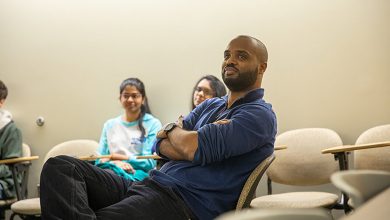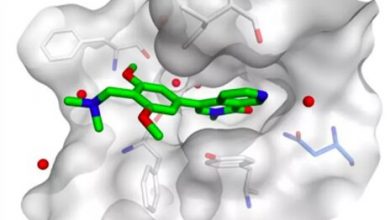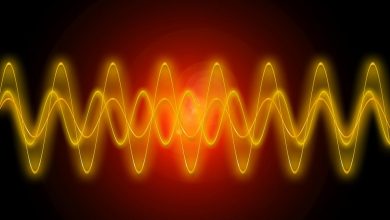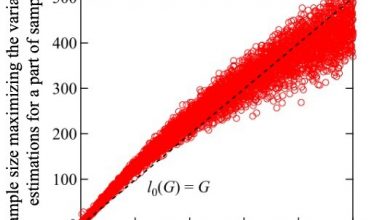Neural network can distinguish the characteristic brush strokes of individual painters
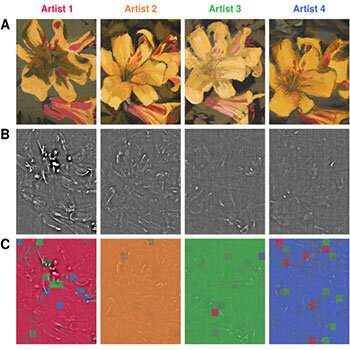
A team of scientists and art historians at Case Western Reserve University say they have used tools of artificial intelligence (AI) to distinguish the individual brushstrokes of one painter from another.
The technique could become a valuable tool to help authorities better identify forgeries of work by famous artists; it could also help art historians tell whether a master, or a student, contributed to a given masterpiece.
The researchers said they believe the finding is among first of its kind because of how the researchers used the computer to read and learn from the 3D topography of a painting. Other forms of AI-enhanced analysis rely on visible stylistic differences that a program may detect in historic works, they said.
The technology of 3D topography describes a three-dimensional relief map of a surface which reveals any differences in “elevation.” In this case, that means rises or dips in the paint surface, even at the smallest scale.
“3D topography is a new way for AI to ‘see’ a painting,” said Kenneth Singer, the Ambrose Swasey Professor of Physics at Case Western Reserve. Singer who led the research, said the AI algorithm focused on the smallest structures on the surface.
The ‘neural network stunned us’
“The neural network stunned us by actually being able to tell with very high accuracy whose hand among four different art students had painted even a tiny fraction of a brushstroke,” Singer said. “We’ve uncovered what could be considered the unintentional style of a painter.”
“Neural network” describes a computer system modeled on the human brain and nervous system—one that learns, identifies and compares patterns. The neural network identified the correct artist 95% of the time from small parts of a brushstroke. Those strokes were roughly the diameter of a single paintbrush bristle.
Michael Hinczewski, the Warren E. Rupp Associate Professor of Physics at Case Western Reserve, was also on the research team. He said that kind of precision was “almost like a fingerprint.”
Each of the artists in their study used the same kind of brush, paint and canvas. “So that the only thing that would be different would be the artist’s hand—the way it interacts with the surface,” Hinczewski said.
“We were shocked with what emerged,” he continued. This is something that must somehow be intrinsic to each artist, not something that the painter is consciously trying to do.”
The team recently published its work in the journal Heritage Science.
Collaborators included Case Western Reserve colleagues Elizabeth Bolman, the Elsie B. Smith Professor in the Liberal Arts and chair of Art History, several others from the physics and biology departments in the College of Arts and Sciences and contributors from the Cleveland Museum of Art and Cleveland Institute of Art.
Attribution of famous art
Bolman, who is an artist historian—a specialization of art history—said many notable masters, from El Greco to Rembrandt, employed workshops. Those workshops included other artists who painted parts of the canvases to speed production and meet market demands for their art.
The artists in a master’s workshop were trying to create a complete painting with a singular style—mimicking the named artist. However, connoisseurs and collectors want to know how much of a given piece was created by the master.
“But those masters didn’t leave notes from their workshops: “Hey, art historians 500 years from now, here’s how we did it,'” Bolman said. “So being able to scan a painting and learn which areas were painted by different hands could be extremely valuable information to connoisseurs.”
The global art market is worth billions of dollars, Bolman said. So,this method of attribution could have important applications to help confirm or dispute authorship.
This new machine-learning method could more accurately determine an unbiased and quantitative analysis of virtually any well-preserved painting, she said.
“Art connoisseurs can spend decades identifying styles, or the weave of the canvas, to learn more about a painting,” Bolman said. “This method isn’t intended to replace any of those, but to add a level of data that humans can’t discern.”
How the AI worked on art
The MORE (Materials for Opto/Electronics Research and Education) Center at Case Western Reserve, where Singer is faculty director, has a chromatic confocal optical profilometer, a tool which uses light and color to reveal miniscule bumps and indentations on a surface.
Singer and his colleagues scanned the students’ paintings to produce 3D surface height data for each work.
The researchers then divided those surface data into virtual patches. Then they trained an ensemble of programs known as convolutional neural networks for attribution—identifying which painter made the stroke.
Hinczewski said that most previous studies for AI art attribution are focused on photos of entire paintings.
“We broke the painting down into virtual patches ranging from one-half millimeter to a few centimeters square, so we no longer even have information about the subject matter,” he said. “But we can accurately predict who painted it from an individual patch. That’s amazing.”
Conclusion: So above is the Neural network can distinguish the characteristic brush strokes of individual painters article. Hopefully with this article you can help you in life, always follow and read our good articles on the website: Ngoinhanho101.com

